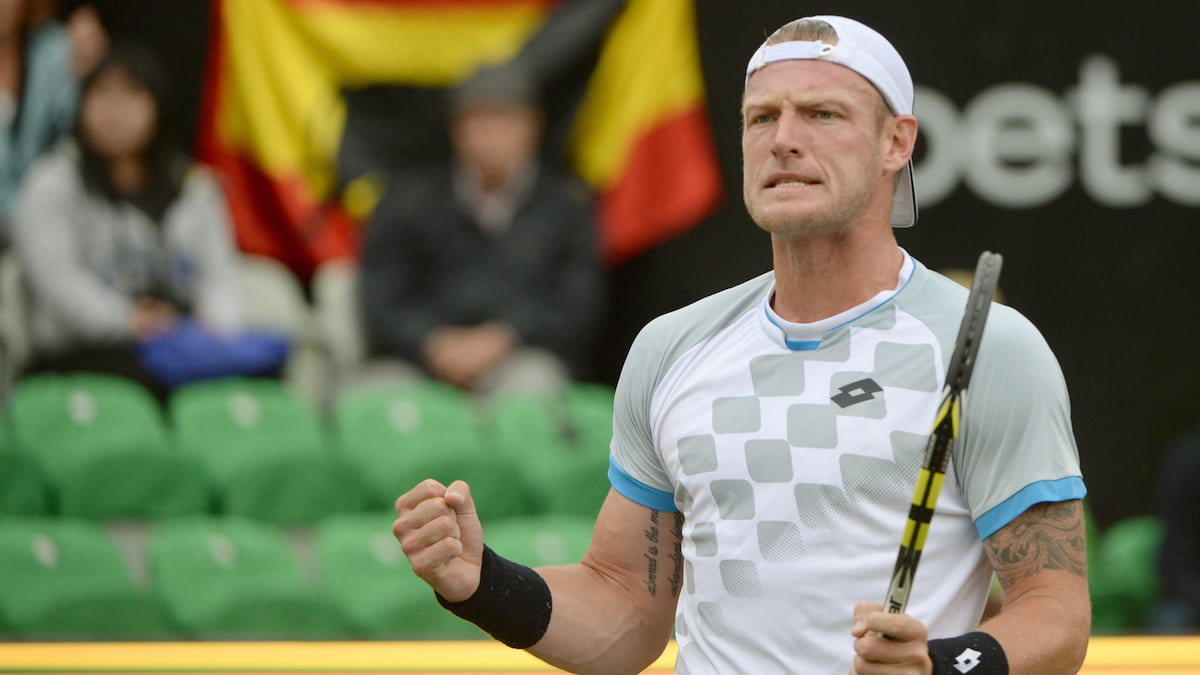Latest Sports Picks, News and Previews

If you’ve ever watched a tennis rally before, you’d know the ball itself is being whacked back and forth at lightning speeds. Before even getting to the rally, though, a player must boldly return the opposition’s serve – if they even can. What makes it hard on the opposition is the server has their timing and pace for slamming the ball as hard as they can to start the rally, so the opposition must react very quickly to keep the ball in play.
Sometimes, other players can’t even return the serve, resulting in scoring an ace for the server. While scoring aces is fancy and all, we’re interested in how fast any given player can hit the ball, although we can’t explain the mystery of why all five of these monster serves occurred between 2011 and 2016! Check them out for yourself – we have provided video evidence of all five hard-hitting servers here.
The long-time experienced Polish tennis player Jerzy Janowicz makes it onto our list, showcasing his incredible serving ability during the 2012 Pekao Szczecin Open Singles. In the first round of this tourney, Janowicz crushed a 251 km/h (156 mph) ball at his opponent, making this one of the fastest serves of all time. Jerzy never made it to the very top of the game, not winning an ATP Tour event during his career and getting to a world ranking high of 14 in 2013. He does have the distinction of being the first Polish player to make the semi-final of a major when he lost to Andy Murray at Wimbledon in 2013.
Tied with Janowicz for one of the fastest serves of all time is Serbian player Ivo Karlović. In the 2011 Davis Cup Doubles round, Karlović would blast a 156 mph serve, comparable to Janowicz’s, after having an already high average serve speed of about 125 mph. Funny enough, without Janowicz or Karlović knowing before this, they would start a battle for the fastest tennis serve in the years that followed. Croatia made the semi-finals of the Davis Cup a couple of years earlier in 2009, when the hard-serving Karlović set a then-record of scoring 78 aces in his match.
Soon after Janowicz and Karlović’s performances in 2011 and 2012, American tennis player John Isner would break both their records in 2016, although his strike was not the fastest of all time. Isner in his 2016 Davis Cup Singles tourney Isner broke both players’ respective records by 1.2 mph, when he outdid his competition from previous tournaments with a lighting serve recorded at 253 km/h (157.2 mph). During his career Isner achieved a top ten ranking but was mostly known for his big serve, and retired in 2023 with the record for the most total aces in the history of the ATP Tour.
If you thought breaking the previous record by 1.2 mph was a lot, then just know France’s Albano Olivetti in 2012 broke Isner’s record by an entire 2.8 mph. Olivetti achieved this feat during his participation in the first round of the men’s singles bracket of the 2012 Internazionali Trofeo Lame Perrel-Faip tournament. Despite his average first serve pace of around only 127 mph, Albano would ramp up the speed for one of his particular serves, hitting the ball at 160 mph, a pace outmatched by only one player in the history of tennis.
Finally, the tennis player with the fastest recorded serve of all time is none other than Australia’s Sam Groth. Groth to this day holds the record for the fastest tennis serve of all time, which he accomplished in the singles division of the 2012 Busan Open Challenger Tennis tournament in the first round. Interestingly enough, Groth throughout the whole tourney had a first serve speed averaging at only 123 mph, to which he would go against the grain and shatter with a 163.7 mph serve, comfortably outdoing all the other record holders to date. Groth opened up a clear distance in speed between himself and the competition, and we have been waiting over a decade for somebody to hit a faster serve!
Let’s compare the speed of these record-breaking serves with the fastest recorded speeds generated in some other popular sports. As you can see from the comparison chart below, only the biggest golf drives can out-pace the speeds generated by high-powered tennis serves.

We have omitted badminton from the above list of sports, because believe it or not, the badminton shuttlecock has been clocked at 322mph when smashed. It doesn’t stay at that kind of speed for more than 0.2 of a second though, which is why we didn’t think it was fair to add it to our comparison chart.

Liam has been a major sports fan and soccer player for over a decade, with a particular focus on major top-level soccer leagues, including the EPL, La Liga, Serie A, Bundesliga and MLS. He has written numerous promotional articles for various top sportsbooks and continues to publish historical and factual sports articles covering the NFL, MLS, NHL, MLB, EPL and more.